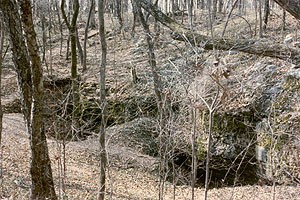The Shelta Cave Crayfish, technically known as Orconectes sheltae, was thought to have gone extinct after decades without sightings. That changed in recent years when scientists rediscovered the little crayfish.
The findings were published in the journal Subterranean Biology on May 20 and co-authored by Dr. Matthew L. Niemiller, an assistant professor at the University of Alabama in Huntsville, Katherine E. Dooley, and K. E. Dooley of UAH. University of Alabama's Denise Kendall Niemiller and Nathaniel Sturm.
Exploring the Cave

In both 2019 and 2020, the crew went into Shelta Cave and discovered individuals of the Shelta Cave Crayfish.
The crayfish is only a couple of inches long and has chelae, which are tiny pincers, Niemiller told UAH. Interestingly, cave researchers have known about the crayfish since the early 1960s, but the late Dr. John Cooper and his wife Martha did not formally identify it until 1997.
"From 1963 to 1975, just 115 persons were confirmed to our knowledge." Since then, only three people have been confirmed: one in 1988 and the two we're reporting in 2019 and 2020."
An Old Thesis
For his dissertation work in the late 1960s and early 1970s, Dr. Cooper, a biologist and speleologist who was a member of the NSS investigated the water life in Shelta Cave, with a special concentration on crayfish. The water environment of Shelta Cave was vibrant at the time, with at least 12 cave-dependent species described, including three cave crayfish species.
According to Dr. Niemiller, no other cave system in the United States contains more recorded cave crayfish co-occurring.
However, in the early 1970s, the aquatic environment, including the Shelta Cave Crayfish, collapsed. The collision might be linked to a fence designed to keep people out of the cave while allowing a grey bat maternity population to enter and exit freely.
According to Dr. Niemiller, the initial design of the gate was not bat-friendly, and the bats eventually left the cave system. Together with groundwater contamination and maybe additional stresses, all of this could have created a perfect storm that led to the collapse of the aquatic cave ecosystem.
Long Time No See
The Shelta Cave Crayfish was never as numerous as the other two species, Southern Cave Crayfish (Orconectes australis) and Alabama Cave Crayfish, even before the fall in the aquatic cave population (Cambarus jonesi).
After several decades of no verified sightings and the recorded significant fall of other water cave species at Shelta Cave, people, including myself, assumed that the crayfish had become extinct.
Unexpected Find
While the existence of the Shelta Cave Crayfish is encouraging, he claims that other aquatic species previously found in the cave system, such as the Alabama Cave Shrimp and Tennessee Cave Salamander, have yet to be identified.
Niemiller stated he didn't expect to locate the Shelta Cave Crayfish because he hadn't seen any during previous visits to the cave. They were lucky to view just a few Southern Cavefish and Southern Cave Crayfish.
The National Speleological Society owns and manages the Shelta Cave, a 2,500-foot cave system in Huntsville, Alabama. It is located under the organization's national offices in northwest Huntsville and is bordered by subdivisions and streets.
Read also: Scottish Chef Makes Delicacies Out of Squirrels to Combat Invasive Species: Discussing Invasivorism
For the most recent updates from the animal kingdom, don't forget to follow Nature World News!
© 2026 NatureWorldNews.com All rights reserved. Do not reproduce without permission.





